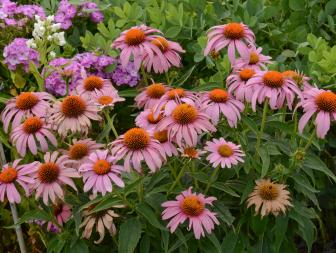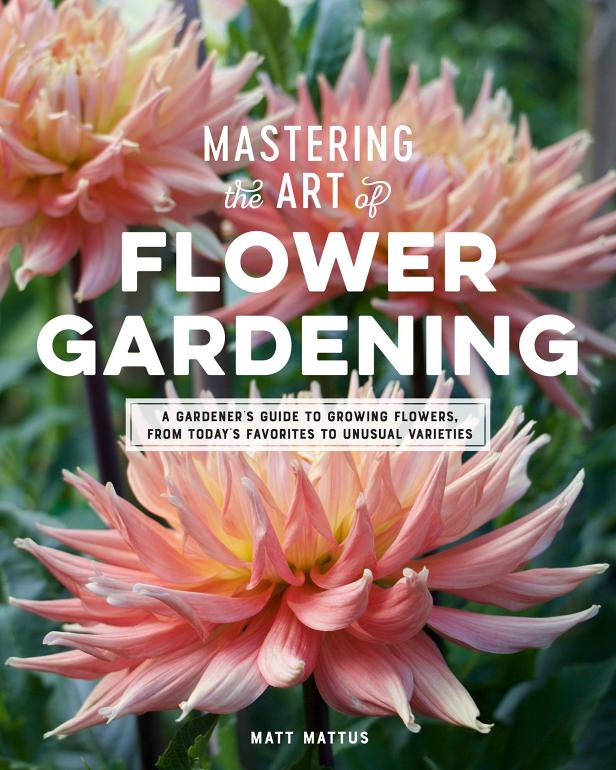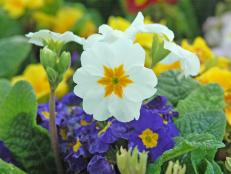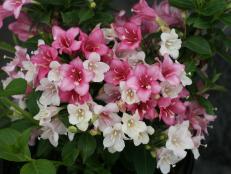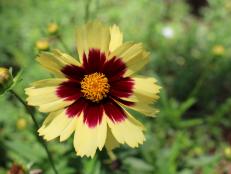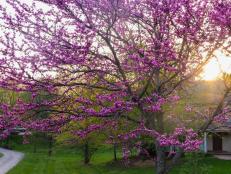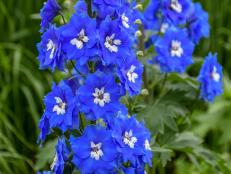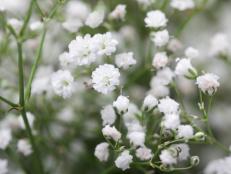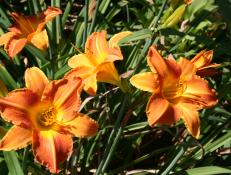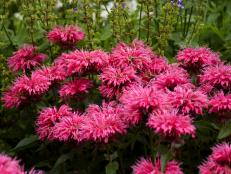How to Grow Bleeding Heart
Find out how to grow bleeding heart, a low-maintenance perennial for shade, and how to care for it in your garden.
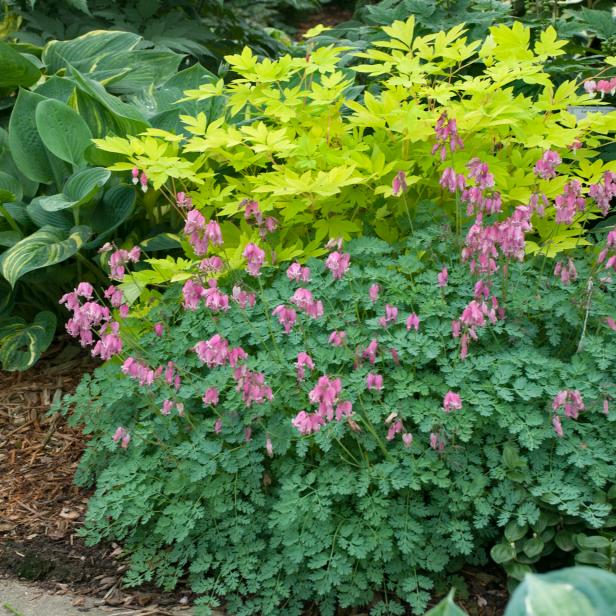
Walters Gardens, Inc.
'King of Hearts' Dicentras are showy companions for hostas and other shade-loving perennials.

Dicentra, also known as bleeding heart, is an easy-to-grow perennial for USDA Zones 3 to 9. The plants thrive in cool, moist, shady areas and take their name from their heart-shaped blooms, which usually open in early spring and attract thirsty hummingbirds. The charming flowers are available in white, pink and red with fern-like foliage.
When you're shopping for these traditional cottage garden favorites, "Know that there are two distinct types," says Matt Mattus, author of Mastering the Art of Flower Gardening: A Gardener's Guide to Growing Flowers, From Today's Favorites to Unusual Varieties. "There are dwarf, compact types with blueish, ferny foliage and dark red slender flowers used as ground covers, and the taller, classic 'Alice-in-Wonderland' type of bleeding hearts with dangling flowers on arching stems."
Bleeding Heart is a Great Deer-Resistant Plant
Deer-Resistant Perennials
Give Bambi the brush-off by filling your landscape with deer resistant perennials.
Bleeding hearts are one of several Dicentra species. Old-fashioned bleeding hearts, or common bleeding hearts, are known botanically as Lamprocapnos spectabilis (formerly Dicentra spectabilis). Depending on the variety, they can grow six inches to three feet tall in part sun to shade. They are typically spring bloomers and like rich, moist soil with a neutral to slightly acidic pH. "Be vigilant when reading labels," Mattus warns. Lamprocapnos is a new name for the Dicentra spectabilis plants, and not all nurseries and landscape designers are using it yet.
Pacific bleeding hearts are Dicentra formosa, also known as Western bleeding hearts. These pink beauties have blue-green foliage and tolerate part to full shade. They grow 10" to 12" tall, start blooming in very early spring and may bloom into the summer if kept dead-headed.
Fringed bleeding hearts, or Dicentra eximia, are wildflowers native to the Eastern United States, where they grow in shaded woodlands. The plants reach 12" to 24" high with fern-like or fringed blue-green foliage. Flowers can be white, light pink or dark pink, and their stems are more upright than those of old-fashioned bleeding hearts. If you want to grow them, buy them from a reputable source and don't dig them up from the wild. The plants dislike being moved and seldom survive when transplanted.
How to Grow Bleeding Heart Plants
Give most types of bleeding hearts a spot in partial shade, where they're protected from the hot sun. Start bare-root plants in early spring or potted plants any time during the growing season.
Dig holes for the plants as deep as their roots are long, and about twice as wide as the root balls, if you are planting potted plants. Remove any rocks, sticks or other debris from the holes. Bleeding hearts like soil with humus and good organic matter, so add compost and leaf mold if you need to improve your planting site.
Put bare-root plants into the holes so the crowns are two inches below the surrounding soil (small varieties can be planted with the crowns an inch below the soil line). Backfill the holes and gently firm the soil around the roots. Water thoroughly after planting. Bleeding hearts do best when they absorb their nutrients from the soil, so don't add any fertilizer at planting time. Instead, give them a balanced, slow-release fertilizer or side-dress with compost when new growth appears next spring.
Mulch with compost or shredded leaves, which will eventually enrich the soil while also retaining moisture and holding down weeds.
How to Care for Bleeding Hearts After They Bloom
Bleeding heart plants will die back after flowering and go dormant. Yellow or tattered leaves signal the end of their blooming period. Sometimes they'll produce new leaves, but if not, you can cut the plants back to the ground or wait until a killing frost to remove the foliage. These hardy perennials will come back the following spring.
Dicentras don't require dividing for many years, but if you want to divide your plants and replant the clumps, do it in the early spring and get as many of the roots as possible. Water them thoroughly and regularly after replanting, until the transplants become established.
Bleeding hearts are toxic, so they're seldom bothered by garden pests like deer or rabbits. Do not grow them around pets or small children, who might be tempted to touch or try to eat them.
How to Handle Pests and Diseases
If slugs and snails chew holes in the leaves of your plants or leave slimy trails around them, make a trap from a jar lid filled with some beer. The pests will be drawn to the yeast in the beer, fall in and drown.
You can also sprinkle diatomaceous earth around your plants. This natural substance kills slugs and snails when they crawl over it and scrape their bodies, which leads to dehydration. Another option: purchase snail or slug bait and carefully follow the directions on your product.
Finally, keep the area around your plants clear of organic debris, so slugs and snails don't have a place to hide.
Aphids can harm bleeding hearts by sucking plant juices, which can weaken the plants enough to kill them. Use neem oil or horticultural oil to kill them, but don't spray when the sun is out, which could burn the plants' foliage. Protect bees and other pollinators by spraying late in the day, when they're less likely to be active, and avoid using chemicals that can kill beneficial insects as well as insect pests.
If you find waxy brown or tan bumps under plant leaves, suspect scale, pests that also suck plant juices. Control them with the same measures you'd use for aphids.
Companion Plants for Bleeding Hearts
Bleeding hearts make great companions for other shade-loving plants, including coral bells, astilbes and foamflowers. Mattus recommends ferns, hellebores and hostas and adds, "Most of us will never even notice that (the bleeding hearts) have gone to sleep for the rest of the year until they emerge again in early spring for another show. Just be careful not to plant other plants too close to their roots, particularly when they are dormant, to avoid damaging their crowns."
Varieties of Bleeding Hearts to Try
"Many new varieties have been introduced recently, widening the color spectrum available," Mattus says. "Look for new varieties with gold or lime-green foliage, a few with white flowers and a new deep-coral flowered variety with darker foliage named 'Valentine'. Most new patented varieties are clones propagated by micro-propagation in laboratories and will not come true from seed."
'Gold Heart,' an old-fashioned plant with golden-yellow to chartreuse foliage and pink and white flowers. Grows 18" to 24" tall in part shade to shade.
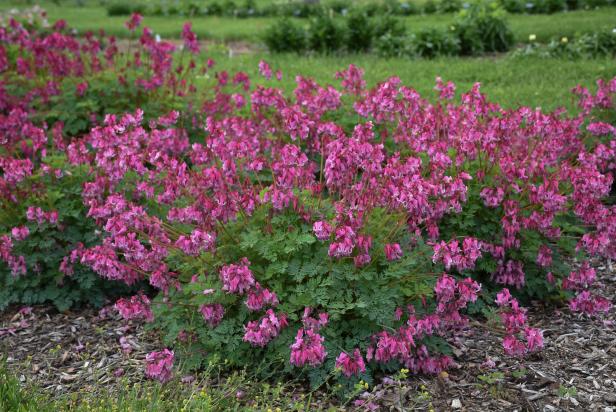
ProvenWinners.com
Unlike most bleeding hearts, 'Pink Diamonds' Dicentras thrive in full sun when given good drainage. This is an alpine-type variety.
'Pink Diamonds,' an early fall to spring bloomer with blue-green, fernlike foliage and pink flowers. This variety can take part sun to sun.
'Alba,' an old-fashioned, white-flowering bleeding heart for part shade. Blooms open in May to June.






